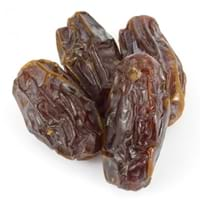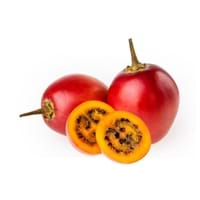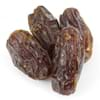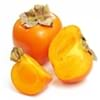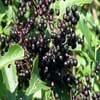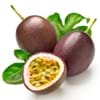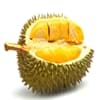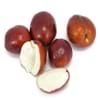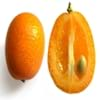Health Benefits
Cancer prevention, Cures gastro-intestinal troubles, Diarrhea treatment, Heart care, Heat stroke treatment, Improves muscular strength, Prevents constipation, Prevents nerve damage, Strengthening of bones
Cancer prevention, Improves eye vision, Prevents diabetes, Prevents high blood pressure
General Benefits
Boosts immune system, Maintains healthy cholesterol level, Strengthens bones
Cures inflamed tonsils, Helps in weight loss, Maintains healthy cholesterol level
Skin Benefits
Anti-aging benefits, Brightens and lightens complexion, Reduces wrinkles, Treatment of skin diseases
Anti-aging benefits, Protects skin from oxidative stress
Hair Benefits
Prevents hair loss, Promotes longer and healthier hair, Protects hair, Regulates hair growth
Protects hair
Allergy Symptoms
Redness of eyes, Runny nose, Sneezing, Watery eyes
Anaphylaxis, Coughing, Diarrhea, Eczema, Hives, Itching sensation in throat, Nausea, Skin Rashes, Runny nose, Sneezing, Swelling of mouth, tongue or lips, Vomiting, Wheezing
Side Effects
Allergic reaction, Diarrhoea, Intestinal gas, Stomach pain, Tooth decay, Weight gain
Heart burn
Best Time to Eat
Any time except an hour after meal, Don't consume at night and before bed
Along with meal, As a snack in the late afternoon, Don't consume at night and before bed, Don't eat after meal, Morning time (before lunch)
Vitamin B5 (Pantothenic Acid)
Vitamin C (Ascorbic Acid)
Vitamin K (Phyllochinone)
Phytosterol
Not Available
Calories in Fresh Fruit with Peel
Not Available
Calories in Fresh Fruit without Peel
Not Available
Calories in Frozen Form
Not Available
Not Available
Calories in Canned Form
Not Available
Type
Tropical
Fruit vegetable
Season
Spring, Summer
All seasons
Varieties
Barhi, Dayri, Deglet Noor, Halawy, Khadrawy, Medjool, Thoory and Zahidi
Tamarillo bold gold, Tamarillo red beau, Tamarillo tango and Tamarillo teds red
Color
Black, Brown, Red, Yellow
Orange, Red, Yellow
Inside Color
Brown
Creamy Yellow
Soil Type
Clay, Loam, Sand
Sandy loam, Well-drained
Climatic Conditions
Hot, Warm
Rainfall, Warm
Facts about
- Date is known as the tree of life in Middle east.
- Date palms cover 3% of the earth's total farmlands.
- Scholars believe that date (and not apple) was the real fruit mentioned in the Bible's Garden of Eden.
- Up until 1967, tamarillos were referred to as tree tomatoes.
- The name tamarillo is derived from Maori word 'tama' which means leadership and rillo from spanish word 'amarillo' which means yellow.
Cocktails
Not Available
Yes
Top Producer
Egypt
New Zealand
Other Countries
Algeria, Iraq, Oman, Pakistan, South Africa, United Arab Emirates
Australia, Chile, Colombia, Malaysia, Peru, Philippines
Top Importer
India
United States of America
Top Exporter
United Arab Emirates
New Zealand
Botanical Name
Phoenix Dactylifera
Solanum betaceum
Synonym
Not Available
tree tomato, genus Cyphomandra, Cyphomandra
Subkingdom
Tracheobionta
Tracheobionta
Division
Magnoliophyta
Magnoliophyta
Class
Liliopsida
Magnoliopsida
Subclass
Arecidae
Asteridae
Family
Arecaceae
Solanaceae
Species
P. dactylifera
Solanum betaceum
Generic Group
Palm
Nightshade
Difference Between Date and Tamarillo
We might think that Date and Tamarillo are similar with respect to nutritional value and health benefits. But the nutrient content of both fruits is different. Date and Tamarillo Facts such as their taste, shape, color, and size are also distinct. The difference between Date and Tamarillo is explained here.
The amount of calories in 100 gm of fresh Date and Tamarillo with peel is 282.00 kcal and Not Available and the amount of calories without peel is Not Available and 31.00 kcal respectively. Thus, Date and Tamarillo belong to High Calorie Fruits and Low Calorie Fruits category.These fruits might or might not differ with respect to their scientific classification. The order of Date and Tamarillo is Arecales and Solanales respectively. Date belongs to Arecaceae family and Tamarillo belongs to Solanaceae family. Date belongs to Phoenix genus of P. dactylifera species and Tamarillo belongs to Solanum genus of Solanum betaceum species. Beings plants, both fruits belong to Plantae Kingdom.
